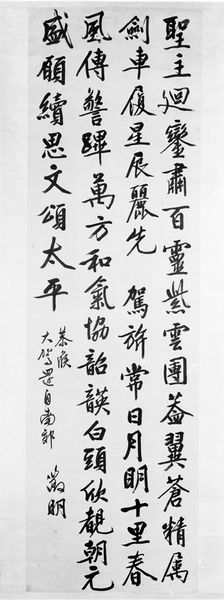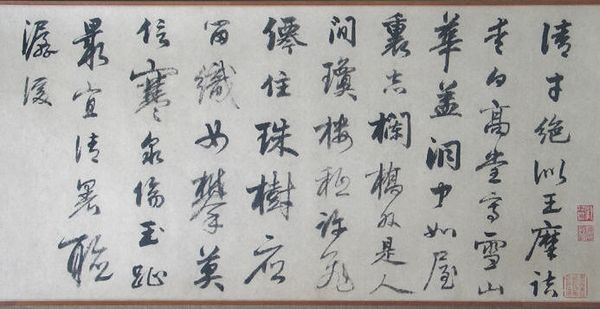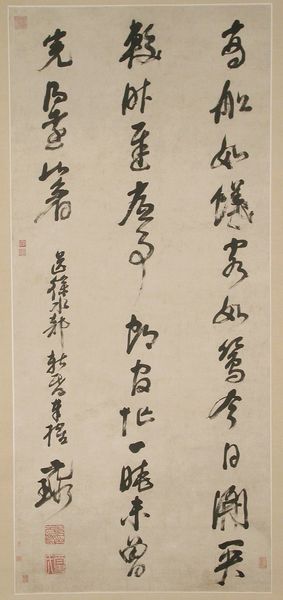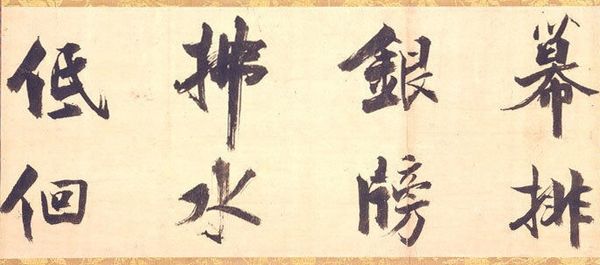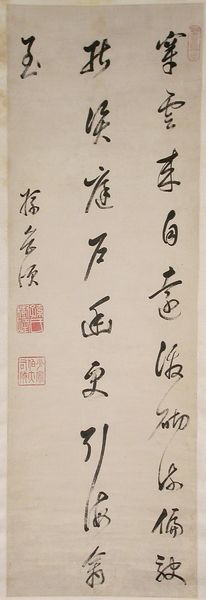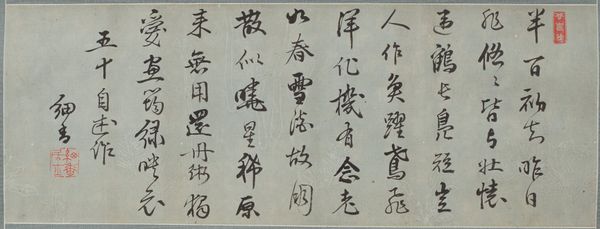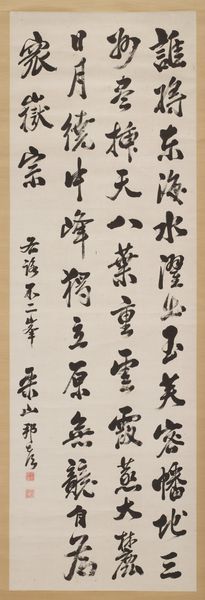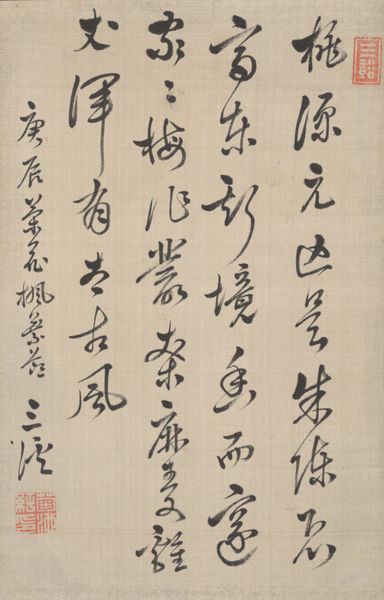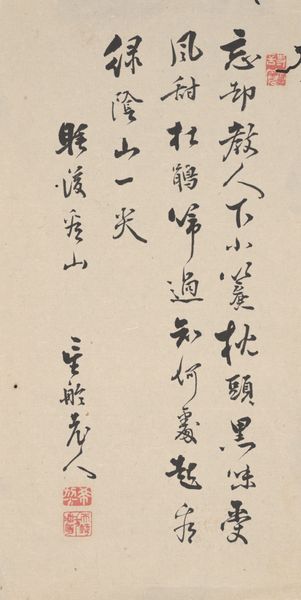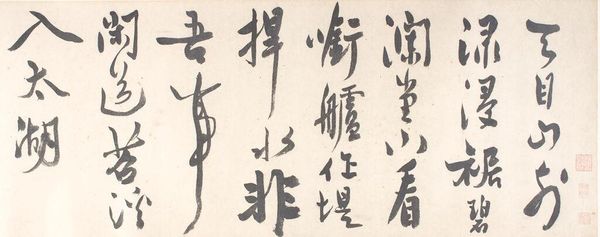
drawing, ink
#
drawing
#
ink painting
#
asian-art
#
ink
#
calligraphy
Dimensions: Image: 65 3/4 x 18 1/2 in. (167 x 47 cm) Overall: 85 x 23 3/4 in. (215.9 x 60.3 cm) Overall with knobs: 85 x 26 1/2 in. (215.9 x 67.3 cm)
Copyright: Public Domain
Editor: This is Wang Wenzhi's "Calligraphy," created in 1801. It's an ink drawing, part of the Asian art collection at the Met. The fluid strokes and vertical composition give it such a serene and almost meditative quality. How would you interpret this piece? Curator: Beyond its aesthetic qualities, let's consider its function within the literati culture of the time. Calligraphy wasn’t just decorative; it was a crucial element of scholarly life, a way to express one's moral character and erudition through the act of writing. What do you think the display of this piece might have signified about the owner? Editor: That's fascinating! Maybe displaying such calligraphy signaled sophistication and cultural capital, or that the owner saw themselves as part of that elite circle of educated individuals? Curator: Exactly. It also speaks to the politics of imagery at the time. The emperor strongly influenced art production, favoring more traditionally crafted artworks over more modern or subversive art. Is that evident in this particular work? Editor: Perhaps, I do see some influence from older traditions that you pointed out, with these artistic and social standards that came from high up, that artists followed... and I guess owners then bought into. But does that make it seem rigid? Curator: Not necessarily rigid, but conscious of its place within the established hierarchy. The elegance and technical mastery would certainly be appreciated within the Imperial court and wider circles, and that assured Wang Wenzhi of continued support. It is through social forces such as Imperial preferences that we see its effect on artwork such as Wang's, with a push towards artworks and artistic practice, and in effect pushes another to its margins. Editor: I never considered that displaying calligraphy could be so intertwined with cultural status and social structures! Curator: Precisely. It illustrates how art often operates as a signifier of social standing and cultural affiliation within specific contexts. Editor: I guess it’s a good reminder that even something that looks this serene has its place in socio-political history. Thanks!
Comments
No comments
Be the first to comment and join the conversation on the ultimate creative platform.
